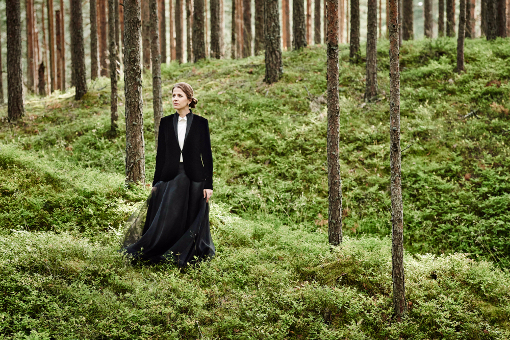Shadows and energy, ghosts and pomposity at Tallinn’s Estonia Concert Hall

Each year the Estonian Music Days have at their epicentre a large-scale orchestral concert given by the Estonian National Symphony Orchestra in Tallinn’s grand concert hall. The occasion celebrates new and established works alongside each other, the former reinforced with the presentation of the Au-tasu award, a composition prize for the best contemporary piece premiered in the previous calendar year. Last year’s inaugural prize went to Liisa Hirsch, whose Threshold was the first of three brand new orchestral scores premiered at this year’s concert, all remarkably different from each other, a positive sign considering the extent to which Estonian music, generally speaking, seems to focus more on a consistent internal (not to say nationalist) identity rather than seeking obviously to draw on external influences. Hirsch’s piece emerged from and finally receded into low, antediluvian textural shapes, like vague shadows moving within darkness. The work’s arch structure gradually introduced light, extruding (usually very high) pitches, establishing a muscular swell that brought clarity to the harmony, though mostly through a sense of ‘aerating’ it, removing the surrounding ballast and stodge. Hirsch’s control – musical and dramatic – was superb, Threshold as a whole sounding like the drawn-out physical movement of some immense being.
By far the weakest of the premières was Tauno Aints’ In Memoriam Veljo Tormis, a piece that sought to do little more than indulge the most hackneyed, filmic clichés, Aints’ music so entirely suited to some generic tense movie scene that it felt overwhelmingly as though something vital was missing. Dogged by an artificial, rather pompous sense of its own grandiosity – eventually resorting to reheated neo-Romanticism, all blubber and no meat – one was left seriously wondering to what extent Veljo Tormis would have regarded the piece as a compliment.
Timo Steiner’s And then leave everything you’ve got and go… for piano and orchestra deserved plaudits for many reasons, above all its courage. Steiner turned soloist Johan Randvere – demonstrating an altogether different brand of virtuosity – and his instrument into the merest impression of music, blowing the strings and pressing the keys at the cusp of audibility. Loosely-connected notes (equally hushed) just about formed a melody, and one became shiveringly aware that the piece had a distinctly hauntological tone, as though the music was bleeding from the walls of the concert hall, ghostly traces from the past. The orchestra’s role (silent for a long time) moved from embellishment to fury, the density of its material swallowing up the piano – which continued, either indifferent or unaware of what was transpiring. The relationship was never clarified, but this only made the piece more fascinating.
The musical establishment was represented by two of the country’s most renowned figures, Erkki-Sven Tüür (after Arvo Pärt, their most famous living composer) and Lepo Sumera. Composed in 1996, Tüür’s Cello Concerto opens with the soloist trying on both simple and complex ideas to see how they fit and feel, before – despite the composer’s programme note to the contrary – establishing a clear, close relationship with the orchestra, responding to each other conversationally, picking up each other’s threads. It’s about momentum more than anything else, though in a similar way to Timo Steiner, Tüür’s soloist exhibited a zen disregard as the landscape evolved into something strange and troubling. Tüür speaks of this landscape as “absurd”, which may account for the fact that, structurally, the Cello Concerto really makes no sense at all, yet in some respects this transpired to be something of a virtue. Cellist Theodor Sink (who had suffered the death of his mother just last week) played with unsettling intensity, and the long pause he left after the final bar, though more personal than musical, filled the hall with a deafening silence.
Lepo Sumera’s six symphonies – still essentially the preserve of Estonian concert halls – are crying out for global recognition, demonstrating as they do some of the greatest symphonic writing of the late 20th century. The Fourth, nicknamed “Serena borealis”, linked back to Liisa Hirsch’s piece, focussing on texture as the medium for its message. Conductor Kristiina Poska allowed the players unbridled freedom in the symphony’s colossal opening discharge (often curiously sounding as though it wanted to break out into The Ride of the Valkyries), but the way she managed the subsequent extended climax, Sumera seemingly wanting to generate and release vast amounts of energy at the same time, was hugely impressive. Yet it was the symphony’s placid austerity that made the deepest impression. At times, the Estonian National Symphony Orchestra had sounded a little out of their depth, straining to live up to Sumera’s demands, but in the lengthy quiet passages they made magic, giving the gorgeous impression of music made of glass, turning in the air, filtering and refracting the light.

 EST
EST